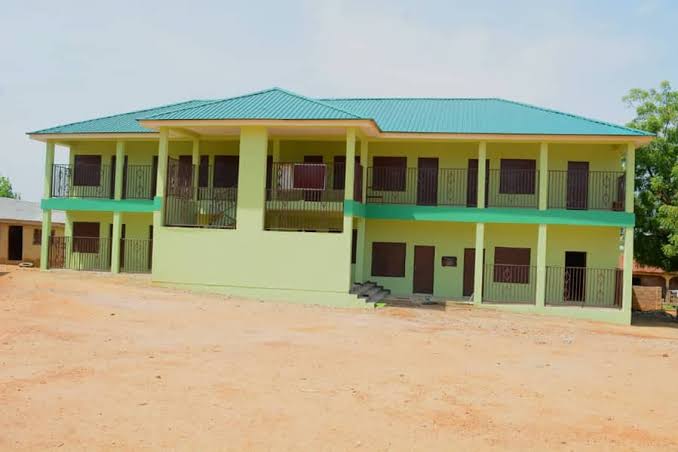Education: a fundamental right and cornerstone for development in any society. However the state of infrastructure in schools can significantly impact the quality of education that students receive. In Nigeria, challenges of infrastructure in schools are manifold. They present significant barriers to effective learning and teaching. This article delves into the various infrastructural challenges faced by Nigerian schools. It examines their causes impacts and potential solutions.
The state of infrastructure in Nigerian schools often reflects broader socio-economic challenges within the country. Despite various governmental and non-governmental efforts to improve the educational sector, many schools particularly in rural areas, remain inadequately equipped. Poor infrastructure affects not only the physical environment of schools. It also impacts the morale and performance of both students and teachers.
One of the most glaring issues in Nigerian schools is the lack of adequate classroom facilities. Many schools operate in overcrowded conditions. They have classrooms accommodating far more students than they designed for. This overcrowding makes it difficult for teachers to manage classrooms effectively. Students struggle to concentrate on their studies. In some cases students are forced to learn in makeshift structures or even outdoors. This exposure to the elements disrupts their learning process further.
Poorly Maintained Buildings
Many school buildings in Nigeria are in a state of disrepair. Roofs leak, walls crack, and floors are often uneven or broken. Such conditions are not only unsafe but also create an uninspiring learning environment. The lack of proper maintenance is often due to inadequate funding and a lack of commitment to regular upkeep. This neglect can lead to more severe structural problems over time, making the buildings hazardous for students and staff.
Lack of Basic Amenities
Basic amenities such as water, electricity, and sanitation facilities are lacking in many Nigerian schools. Access to clean drinking water is a major issue, with students often having to bring water from home or go without during school hours. The absence of reliable electricity hampers the use of modern teaching aids and technology, which are crucial for a comprehensive education in today’s world. Furthermore, inadequate sanitation facilities, particularly toilets, pose serious health risks and can deter students, especially girls, from attending school regularly.
Insufficient Learning Materials
The shortage of learning materials is another significant challenge in Nigerian schools. Many schools lack sufficient textbooks, writing materials, and other essential supplies. This scarcity forces students to share books and other resources, hindering their ability to study effectively. Additionally, the lack of laboratory equipment in many secondary schools means that students cannot engage in practical science experiments, which are crucial for a thorough understanding of scientific concepts.
Impact on Educational Outcomes
The inadequate infrastructure in Nigerian schools has a direct impact on educational outcomes. Students in poorly equipped schools are less likely to perform well academically compared to their peers in better-resourced institutions. The substandard learning environment can lead to lower attendance rates, higher dropout rates, and decreased motivation among students. Teachers, too, are affected, as they struggle to deliver quality education without the necessary tools and resources.
Causes of Infrastructure Challenges
Several factors contribute to the infrastructure challenges in Nigerian schools. One major factor is the insufficient funding allocated to education by the government. Despite commitments to improve the sector, the budgetary allocations often fall short of what is needed to address the infrastructural deficits. Corruption and mismanagement of funds also play a role, with resources meant for school improvements being diverted or misused. Additionally, rapid population growth in Nigeria has put a strain on existing educational facilities, leading to overcrowding and overuse of resources.
Efforts to Address the Challenges
Various efforts have been made to address the infrastructure challenges in Nigerian schools. Government initiatives, such as the Universal Basic Education (UBE) program, aim to improve the quality of education and school facilities. Non-governmental organizations (NGOs) and international agencies also play a crucial role by providing funding, resources, and expertise to support school improvement projects. Community involvement is another important aspect, with local communities contributing labor, materials, and financial support to enhance their schools.
Potential Solutions
To effectively address the infrastructure challenges in Nigerian schools, a multifaceted approach is required. Increasing the budgetary allocation for education and ensuring that funds are used transparently and efficiently is essential. Implementing regular maintenance schedules and establishing clear accountability mechanisms can help prevent the deterioration of school buildings and facilities. Investing in teacher training and providing adequate learning materials will also improve the overall quality of education.
Moreover, leveraging technology can help bridge some of the gaps caused by inadequate infrastructure. For instance, solar-powered devices can provide electricity in schools without access to the national grid. Digital learning resources can supplement physical textbooks and materials, making education more accessible and interactive. Encouraging public-private partnerships can also bring in additional resources and expertise to support school infrastructure projects.
Conclusion
The challenges of infrastructure in Nigerian schools are significant but not insurmountable. Addressing these issues requires a concerted effort from the government, private sector, NGOs, and local communities. By prioritizing education and investing in the necessary infrastructure, Nigeria can create a more conducive learning environment for its students, ultimately leading to better educational outcomes and a brighter future for the nation.
